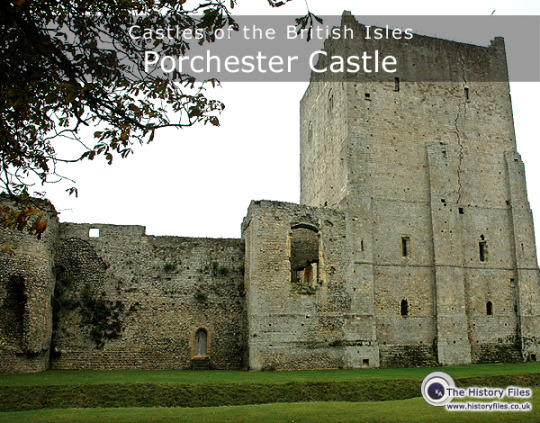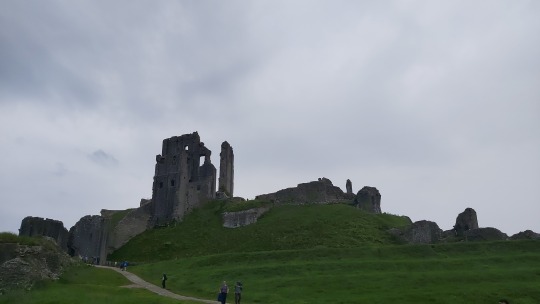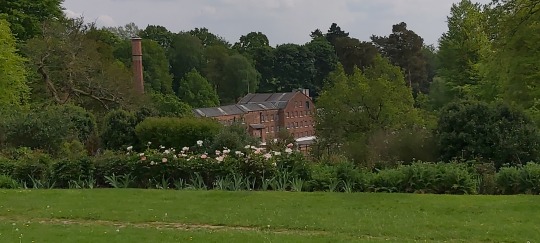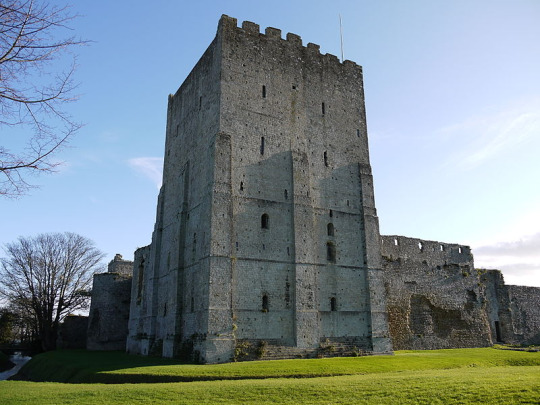#Portchester castle
Explore tagged Tumblr posts
Text

Portchester Castle : this castle Hampshire on England's south coast began life as a Roman coastal fort, one of their Saxon Shore forts, but it also contains medieval additions which extended its working life across a millennium.
#history#historyfiles#castles of the british isles#castles of britain#british castles#castle#castles#portchester castle#hampshire#england#saxon shore#portus adurni
4 notes
·
View notes
Video
youtube
Portchester Castle is a medieval fortress in Hampshire. UK,
0 notes
Text




In December 1174, Henry signed the Treaty of Falaise with the humiliated William King of Scotland who had been captured at Alnwick. With Richard and Geoffrey witnesses to this treaty, he agreed that Henry was his feudal overlord. Geoffrey should have had more than a passing interest in this because William was his fiancee's uncle. Constance's mother Margaret, who had returned to England after Conan's death, had also been captured in 1174, and was imprisoned first at Portchester Castle, then at Rouen. Henry II must have wanted to keep her under his control by marrying her to one of his men, for in 1175, he married her to his constable Humphrey de Bohun. More than a decade later he would treat her daughter in the same way.
-Kathy Carter, Arthur I, Duke of Brittany, in History and Literature
#historyedit#margaret of huntingdon#twelfth century#my edit#text in edit from Arthur de Bretagne (1187-1203): L'espoir breton assassiné by Eric Borgnis Desbordes
40 notes
·
View notes
Text



October 4th 1716 saw the birth of Scottish physician James Lind.
In May 1747 Lind began a controlled experiment which demonstrated that citrus fruits could prevent scurvy, the importance of Lind’s findings on scurvy were recognised at the time, bul for some reason was ignored. it was more than 40 years later that an official Admiralty order was issued on the supply of lemon juice to ships. With this, scurvy disappeared almost completely from the Navy.
Born in Edinburgh in to a family of merchants, Lind was educated at the Royal High School. In 1731, aged 15 he registered as an apprentice at the College of Surgeons in Edinburgh and in 1739 became a surgeon’s mate, seeing service around the world in the Royal Navy.
James Lind is remembered as the man who helped to conquer a killer disease. His reported experiment on board a naval ship in 1747 showed that oranges and lemons were a cure for scurvy, he selected 12 men from the ship, all suffering from scurvy, and divided them into six pairs, giving each group different additions to their basic diet. Some were given cider, others seawater, others a mixture of garlic, mustard and horseradish. Another group of two were given spoonful’s of vinegar, and the last two oranges and lemons. Those fed citrus fruits experienced a remarkable recovery. While there was nothing new about his discovery - the benefits of lime juice had been known for centuries - Lind had definitively established the superiority of citrus fruits above all other ‘remedies’. In 1748, Lind retired from the navy and went to Edinburgh University to take professional qualifications.
In 1753, he published 'A Treatise of the Scurvy’ and in 1757 'An Essay on the Most Effectual Means of Preserving the Health of Seamen in the Royal Navy’, which threw much light on the appalling living conditions and diet of seamen. In 1758, he was appointed physician to the Naval Hospital at Haslar in Gosport where he investigated the distillation of fresh water from salt water for supply to ships. In 1759 he proposed to use solar energy for the distillation of water, it wasn’t until 1810 a new type of cooking stove was introduced for the production of fresh water by distillation possible on a useful scale.
Lind married Isabella Dickie and had two sons, John and James. In 1773 he was living on Princes Street in a brand new house facing Edinburgh Castle, imagine waking up to that view every morning! He couldn’t have been that impressed though, as it looks like he retire to live on the English south coast, he died at Gosport in Hampshire as a Knight Commander of the Order of the Bath, in 1794. He was buried in St Mary's Parish Churchyard in Portchester near Fareham.
13 notes
·
View notes
Text
The car has been returned.
So driving is a skill and something I have been doing for 32 years but there is something about driving in the UK that is just so much harder even though it is on the correct side of the road, there is just so much traffic, less use of indicators, lots of roundabouts and roundabouts with traffic lights and multiple lanes. And to top it all off today, incorrect directions for the rental car drop off point, meant a few tense moments. So as much as having a car means quicker getting around, I am pleased to be back to using my feet, buses, trains or being driven.
Started the day with a very hard 5km run, not hard because of hills or terrain but just hard slow run. Then a bath/shower, followed by our last breakfast included at the golf club. Packed our bags, still can’t believe we carried bags this heavy up to 5kms in 20+degree heat in 2015 during our Grand Tour. Headed back to the wedding venue to say good morning to some dusty looking people but also say farewell for now. Had, I think, my 5th cup of tea for morning, yes that did mean a few WC were visited as well today. We headed off and stopped in Portchester at the Lidl for some picnic supplies before heading to the castle (which was closed) for a car picnic before a wander around.
A stressful return of the car, was followed by a relaxing train ride back to Wareham. Tea with Grandad, followed by watching old Top Gear which was very amusing.
0 notes
Text
Watch "Portchester Castle | 10 Places That Made England with Dan Snow" on YouTube
youtube
Part of a series by Dan Snow, that I'm certainly going to work through.
Porchester Castle was a Roman fort and later a medieval stronghold from where King Edward III and King Henry V both set off for France ahead of the battles of Crécy and Agincourt.
Now it has a view across the water to Portsmouth (aka Pompey) Royal Navy Dock Yards.
One might describe it as The Original Naval Gazing.
0 notes
Text






A busy month for castles and other such things!
Corfe (top right) was most visually stunning, cos of being HUGE and nicely situated. Slighted during the civil war, chunks of it are trying Very Hard to fall down the hill.
Carisbrooke (top left) was most interesting, walls nearly completely circumnavigable (definitely a word, tumblr, i don't deserve that wibbly red line), and a gloriously steep set of stairs to get up to the motte. NOT slighted during the civil war for a change, but has the claim to fame that charles-1 was stored here for a bit before getting Severely Shortened
Portchester (middle right) was most fun to explore, in large part cos of having company for that one, but it's good anyway. Really good interpretation boards as well, very... interpretable! It's in the corner of a roman shore fort, always fun to reuse older defences in castley things.
(also featured, Dudley castle (middle left, which is at a zoo), quarry bank and sherborne-old (bottom left and right) )
1 note
·
View note
Photo

St Mary’s Church, Portchester (within the grounds of Portchester Castle) https://ift.tt/zuDBgr3 — view on Instagram https://ift.tt/fQBgHow
0 notes
Video
Portchester Castle by Roy Llowarch Via Flickr: The Roman Fort at Portchester was built between 285AD & 290AD and was home to the Roman fleet in Britain. The D shaped Roman towers remain today and were incorporated into the Norman castle when it was built sometime between 1066AD & 1100AD. The Anglo Saxons used the fort after the Romans left until the Norman invasion in 1066. Portchester is the best preserved Roman fort north of the Alps. Portchester has been home to many kings and chieftains. See Wiki link below en.wikipedia.org/wiki/Portchester_Castle
#B&W#B&W Photos#B&W Photography#Black & White#Black & White Photos#Black & White Photography#Mono-Chrome#Mono#Mono Photos#Mono Photography#Monochrome Photos#Monochrome Photography#Portchester Castle#Portchester#Roman Britain#Roman Forts#Roman Shore Forts#Roman Saxon Shore Forts#Saxon Shore Forts#Roman Empire#Portus Adurni#Classis Britannica#Anglo Saxons#The Romans#Norman England#Norman Architecture#Norman Conquest#William the Conqueror#Norman Castles#Castles
2 notes
·
View notes
Photo









Portchester Castle - Castles of the UK and Ireland (14/?)
39 notes
·
View notes
Photo


Portus Aderni (Hampshire, England).
This Saxon shore fort was built during the 200s AD at the north end of Portsmouth Harbour. It covered an area of 9 acres, with walls that were 6m high, 3m thick and 200m long, made of coursed flint bonded with limestone slabs. Most of the walls and bastions are still complete, and this is one of the most well-preserved Roman forts north of the Alps.
After the Romans left, Portus Aderni became an Anglo-Saxon residence. During the Middle Ages, it was converted into Portchester Castle. It was occupied for nearly sixteen centuries, last being used as a prison for captured French soldiers during the Napoleonic Wars.
#history#classics#military history#architecture#napoleonic wars#britain#ancient rome#roman britain#anglo-saxon britain#medieval britain#hampshore#portsmouth harbour#portus aderni#portchester castle#pows
631 notes
·
View notes
Text

2 notes
·
View notes
Text
1831 Sunday 9 October
7 40/.. 10 1/2
Incurred a cross last night and another this morning thinking of π [Mariana] lay three quarters hour this morning about -
Very fine morning - Fahrenheit 63°. now at 7 50/.. - down at 8 1/2 - breakfast - out at 9 1/2 for an hour - walked along the town and the marine parade - the marine hotel evidently the one to go to and not very far from the quay - go by daylight, and then easy to get comfortably settled - some very nice little gothic places far better than cottages along the marine parade - 1 or 2 gable-ended houses with gothic 2 stories of windows 4 lights each - 2 projecting in front and one on each side

[Anne’s drawing of the gothic windows]
- that might do very well for the gable ends at Shibden then walked thro' the town to where we landed last night from East Cowes - the Medina (medeena) or Newport river, the wooded hills and towns creeping along the margin of each, very pretty - Cowes too, is the yatch station - I should prefer it to Ryde?
On going back to the Inn, the driver came to be paid - he asked 6/. a day - had Mr. Webb, the master of the house up - he said a man should have 5/6 a day for that their masters paid them nothing but a boy like that (like the one who drove me) should have 4/. so gave him after that rate -
Off in the Malmesbury Steamer from Cowes at 10 3/4 - very pretty look back upon the town (West Cowes) see little of East Cowes and hardly any of the river - leave it hid behind West Cowes - just get a peep of the top of East Cowes (Mr. Nash) he there because the flag flying, and of the top, soon after, of Norris Castle where the duchess of Kent's flag was flying - At 11 1/4 pass the little thick low round Calshot Castle (like Hurst Castle) and enter the Southampton river - the little thin tall Castle Tower we saw before was Eaglehurst - small boat from the Thames landed at 12 5/.. -
Back at the Crown Inn (very civil people but very b.g. 2nd. rate, tavern-kind of house) - at 12 10/.. - carriage packed - read this morning's globe, every column in mourning for the throwing out of the reform bill by a majority of 41 lords - all the bps. [bishops] against but Norwich and Chichester - Lord Wynford spoke much and well against the bill -
Off from Southampton commonly here shortened to Southton at 1 3/4 - fine looking town - in 7 or 8 mins. [minutes] at Northam bridge 1st. and 2nd (a handsome wooden 5 arch-bridge and then at a very short distance a bridge (wood?) of one arch) both over the lake-like river Itchen which is here very beautifully skirted with wood and gentlemens seats, and altogether a beautiful scene with shipping and Southampton to the left behind us -
At 2 10/.. on Netley common, a heathery moor, bounded (right) by fine wood thro' which beautiful peeps of the Southampton river - poor land in all directions about Southampton, even along the beautiful banks of its river - land here almost as poor (but not so white sandy) as from Poole to Swanage - all the land along the coast from Southampton to Weymouth poor even if no farther, which I have not seen - at 2 1/2 fine view of Calshot castle and across the channel - Cowes and just see Ryde - and then in a minute or 2 get into enclosed land again - at 2 38/.. Bursledon bridge (wood) over wide lake that goes to Botley 2 miles left and to the Southampton river right - very picturesque good village scattered round its margin, chiefly whitish straw-thatched ivy-covered houses -
At 2 50/.. Titchfield common and from here and afterwards fine views of the Isle of Wight - could distinguish the watch tower on St. Catherine's hill - at 3 1/4 pass thro' one end of Titchfield apparently neat little town - Fareham at 3 42/.. one long neat, good street - change horses at Harris's far end of the town, having passed the better looking Inn, a large white hart - just below the Inn cross bridge over lake-like water with neat houses round its edge and wood and vessels - very pretty as at Bursledon - then rise little hill and fine view of the water and shipping and of Gosport or Portsmouth or both -
At 4 turned down the pretty little neat village of Porchester to the castle and there at 4 5/.. - walked about in the castle yard and could find nobody till I went out and got a man to take me to the concierge of the castle who was busy shewing about some people - the parish church is in the castle yard - the Saxon arch of the great west door is strikingly beautiful - the north side of the church and roof too very much covered over with ivy - went to the top of the great Keep Tower 103 feet high and 7 stories - in this and the smaller square Tower 8000 French prisoners were lodged during the last war over whom 300 soldiers mounted guard every day - the part where queen Elizabeth lived quite ruined - the great square Keep Tower said to be Roman Saxon and norman architecture - not easy to me to distinguish the 3 periods - Low water on the sea would have washed the south wall of the Porchester castle court - just out of the village of Porchester, the road lies along the low narrow gravelly beach a large surface beyond it being all green as the water makes it and close, left, is Portsea down (or Portsdown?) -

The Keep Tower at Portchester Castle [Image Source]
At 5 1/2 turn left thro' the neat good little village of Cosham down to Portsmouth - do not see any stayable Inn in Cosham - enter Portsmouth at 6 5/.. under two deep arched gateways, a regularly fortified (double walled with boulevard and trees innermost) town, the only one I ever saw in England; nor was I even that such an one existed -
Alighted at the George hotel at 6 10/.. - at last a good first rate Inn again - what a comfort - handsome 3 windowed sitting room, so ordered a dinner soup-potatos and broccoli, and boiled bread pudding and 2 bottles soda water - all good - dinner from 7 25/.. to 8 - before and after wrote out the whole of this of today, and inked over and settled accounts till now 9 10/.. -
Found letter this morning at the Crown Southampton post office date 7th. instant 2 1/2 satisfactory pp. [pages] from Miss H- [Hobart] Richmond park - both she and Lady S- [Stuart] were 'Terribly annoyed at what we thought the overthrow or throw over'....all quite comfortable again - Miss H- [Hobart] thinking it a great triumph that her wishes should be stronger than Lady S- de R-'s [Stuart de Rothesay's] arguments - says Lady Alicia (Gordon) will not stay more than 3 nights and if I wait till the 13th. may be sure of my bed again at the Lodge - very fine day - Fahrenheit 64°. now at 9 1/4 p.m.
[Margin] Saw Chichester cathedral from Porchester castle
[Margin notes] x L
Reference: SH:7/ML/E/14/0131 - SH:7/ML/E/14/0132
#anne lister#anne lister code breaker#gentleman jack#1831#southern england tour#portsmouth#portchester castle
4 notes
·
View notes





